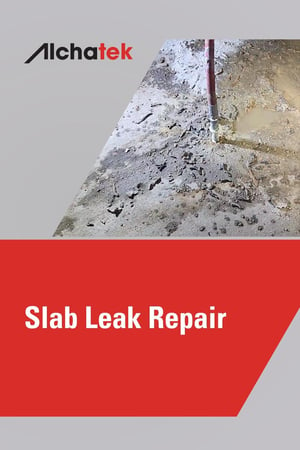
 Are you dealing with a damp basement due to leaking walls? Water seeping into your below-grade rooms can ruin living spaces, destroy stored items, and lead to mold growth. However, you can stop this problem by hiring a contractor trained in sealing concrete cracks.
Are you dealing with a damp basement due to leaking walls? Water seeping into your below-grade rooms can ruin living spaces, destroy stored items, and lead to mold growth. However, you can stop this problem by hiring a contractor trained in sealing concrete cracks.
What Causes Concrete Wall Cracks?
Several factors can cause basement wall cracks that allow water intrusion:
- Imperfect construction: New homes often develop leaks if builders don't properly waterproof them
- Aging concrete: Exposure to hot/cold cycles and general aging creates cracks over time
- Unstable soil: Soil issues like erosion, poor compaction, and freeze/thaw cycles undermine foundations
While temporary surface repairs exist, polyurethane injection from the inside provides the best long-term solution. Depending on your situation, trained waterproofing contractors will likely use one of two methods.
Option 1 - Polyurethane Crack Injection
Polyurethane crack injection offers several advantages. Depending on the structure, contractors may be able to do it from either side of the wall, allowing the space to remain in use during repair. Additionally, the polyurethane material reacts with the leaking water to cure into a flexible seal (allowing for slight structural movement over time).
The Crack Injection Process
- Locate and prepare the crack surface
- Drill injection holes along the crack at an angle
- Flush the holes with water to remove debris
- Install injection ports and inject water to confirm the flow direction
- Inject polyurethane grout, normally starting at the lowest point
- Reinject grout a second time
- Inject a final round of water to reactivate any remaining grout
Contractors need about 1 gallon of grout per 25 linear feet of cracks. Although this process is straightforward, it's not a DIY or handyman project. Always consult a professional to ensure they use proper techniques and materials.
Option 2 - Polyurethane Curtain Wall Grouting
Curtain wall grouting involves injecting an entire wall or section with polyurethane to create a waterproof barrier. This method is ideal when a wall has numerous cracks that are difficult to locate and inject individually.
The Curtain Wall Grouting Process
- Drill a diamond-shaped grid of injection holes across the wall
- Beginning at the bottom, inject each hole with polyurethane grout
- Work up the wall, with each new row of grout flowing over the previous
- Continue until the entire area is sealed
The injected grout penetrates into the soil behind the wall, forming a water-impermeable curtain. Consequently, this "positive side" waterproofing stops the water at its source. As a result, it blocks any seepage from entering the wall.
Contractors pioneered this technique in the 1960s for leaking manholes, and it's effective on concrete, block, stone, brick, and even wood or metal. They often use it for basements with hard-to-find cracks, previously failed injections, or masonry walls unsuitable for individual crack injection.
The specific polyurethane grout used for a curtain wall depends on soil conditions, voids, and water volumes. Therefore, always consult with a waterproofing professional so they can choose the ideal grout and injection pattern.
Hiring a Professional Trained in Sealing Concrete Cracks
Both polyurethane crack injection and curtain wall grouting are highly effective when trained experts do them properly. With either approach, the injected grout creates a permanent, flexible water barrier that reacts with the leaking water.
Once professionals permanently seal the leaks, you can confidently use your below-grade room without worrying about future water damage. As a result, you'll enjoy your dry, comfortable space for decades to come!
Fill out this form or call 404-618-0438 for a contractor referral today!
Want more information about crack injection and curtain wall grouting?






 Water leaks in concrete slabs can be a severe issue for property owners. These leaks occur when water from the ground seeps through cracks or gaps in the concrete foundation, leading to moisture problems inside the building. If not addressed promptly, these upward-moving leaks can lead to structural issues, damage flooring materials, and create an environment conducive to unhealthy mold growth. Curtain grouting with polyurethane is a proven technique for effectively fixing water leaks in concrete slabs. This method creates a barrier beneath the slab, preventing water from penetrating upwards and resolving the issue at its source.
Water leaks in concrete slabs can be a severe issue for property owners. These leaks occur when water from the ground seeps through cracks or gaps in the concrete foundation, leading to moisture problems inside the building. If not addressed promptly, these upward-moving leaks can lead to structural issues, damage flooring materials, and create an environment conducive to unhealthy mold growth. Curtain grouting with polyurethane is a proven technique for effectively fixing water leaks in concrete slabs. This method creates a barrier beneath the slab, preventing water from penetrating upwards and resolving the issue at its source.

 Aging culverts pose a significant challenge for many communities. As these vital drainage structures deteriorate, they can lead to road collapses, flooding, and environmental issues. Fortunately, culvert repair with curtain grouting offers a powerful and efficient solution to this problem. Moreover, this innovative technique can extend the life of culverts without the need for costly and disruptive excavation.
Aging culverts pose a significant challenge for many communities. As these vital drainage structures deteriorate, they can lead to road collapses, flooding, and environmental issues. Fortunately, culvert repair with curtain grouting offers a powerful and efficient solution to this problem. Moreover, this innovative technique can extend the life of culverts without the need for costly and disruptive excavation.
 At Krog Street Market in Atlanta, a shop about five feet below grade had water infiltration issues during heavy rains. The foundation wall was leaking, causing problems for the shop owner. To address this issue, leak seal experts
At Krog Street Market in Atlanta, a shop about five feet below grade had water infiltration issues during heavy rains. The foundation wall was leaking, causing problems for the shop owner. To address this issue, leak seal experts 

 Does leaking or sunken concrete plague your basement floor? These issues can be more than just a nuisance; they can lead to serious structural problems if left untreated. In this article, we'll explore two effective methods for basement floor repair: curtain grouting for leaks and slab lifting for sunken concrete. With an understanding of these techniques, you'll be equipped to find the right repair professionals to restore a safe, dry, and level basement floor.
Does leaking or sunken concrete plague your basement floor? These issues can be more than just a nuisance; they can lead to serious structural problems if left untreated. In this article, we'll explore two effective methods for basement floor repair: curtain grouting for leaks and slab lifting for sunken concrete. With an understanding of these techniques, you'll be equipped to find the right repair professionals to restore a safe, dry, and level basement floor.

 Concrete leak repair is crucial for homeowners with leaks in basements or other below-grade spaces. Concrete can deteriorate over time due to imperfect construction, weather, wear, and unstable soil. However, effective solutions are available. This article explains how polyurethane leak seal grouts offer a cost-effective, durable fix for waterproofing your home.
Concrete leak repair is crucial for homeowners with leaks in basements or other below-grade spaces. Concrete can deteriorate over time due to imperfect construction, weather, wear, and unstable soil. However, effective solutions are available. This article explains how polyurethane leak seal grouts offer a cost-effective, durable fix for waterproofing your home.

 Construction and building maintenance rely on effective waterproofing to ensure longevity and structural integrity. In fact, waterproofing protects against water damage and moisture-related structural issues in residential homes, commercial buildings, and infrastructure projects. Positive side waterproofing and negative side waterproofing are two different methods that are used based on factors like construction design, budget, and water exposure.
Construction and building maintenance rely on effective waterproofing to ensure longevity and structural integrity. In fact, waterproofing protects against water damage and moisture-related structural issues in residential homes, commercial buildings, and infrastructure projects. Positive side waterproofing and negative side waterproofing are two different methods that are used based on factors like construction design, budget, and water exposure.

 Are you dealing with a damp basement due to leaking walls? Water seeping into your below-grade rooms can ruin living spaces, destroy stored items, and lead to
Are you dealing with a damp basement due to leaking walls? Water seeping into your below-grade rooms can ruin living spaces, destroy stored items, and lead to 
 As a homeowner, discovering a leak in your concrete slab can be a stressful and frustrating experience. Left untreated, slab leaks can lead to sinking concrete and structural issues. Fortunately, there is a highly effective solution: slab leak repair with curtain grouting.
As a homeowner, discovering a leak in your concrete slab can be a stressful and frustrating experience. Left untreated, slab leaks can lead to sinking concrete and structural issues. Fortunately, there is a highly effective solution: slab leak repair with curtain grouting.
 Essential Details
Essential Details
